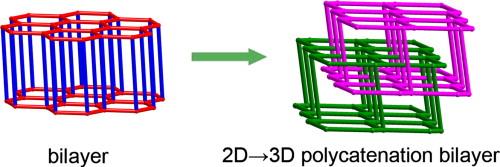Assembly of one 2D layer and two 3D pillared-layer structures derived from metal ions and 5-(pyridin-4-yl)isophthalic acid with or without pillars |
| |
| Affiliation: | 1. College of Chemistry, Chemical Engineering and Materials Science, Soochow University, Suzhou 215123, PR China;2. College of Chemistry and Materials, Yulin Normal University, Yulin 537000, PR China;3. Guangxi Key Laboratory of Chemistry and Engineering of Forest Products, Guangxi University for Nationalities, Nanning 530006, PR China;1. State Key Laboratory of Structure Chemistry, Fujian Institute of Research on the Structure of Matter, Chinese Academy of Sciences, Fuzhou, Fujian 350002, China;2. College of Chemistry, Beijing Normal University, Beijing 100875, China;3. Graduate School of the Chinese Academy of Sciences, Beijing 100049, China |
| |
| Abstract: | 
Three new coordination polymers, [Mn(L)(H2O)2]2·5H2O (1), [Cu(L)(4,4′-bipy)]2·H2O (2) and [Pb(L)(4,4′-bipy)0.5] (3) (H2L = 5-(pyridin-4-yl)isophthalic acid; 4,4′-bipy = 4,4′-bipyridine) have been synthesized and characterized by IR, thermogravimetric analysis, X-ray powder diffraction and X-ray single crystal diffraction. Complex 1 shows a 2D layer structure which stacks with the other ones to form 1D channels to hold 1D water chains. Complex 2 displays a 3D + 3D → 3D polycatenation network. 3 shows a unique 2D + 2D → 3D polycatenation net in which each Pb center has a hemidirected coordination geometry due to the existence of “inert pair effect”. The thermal and luminescent properties of 1–3 were also examined. |
| |
| Keywords: | |
| 本文献已被 ScienceDirect 等数据库收录! |
|

